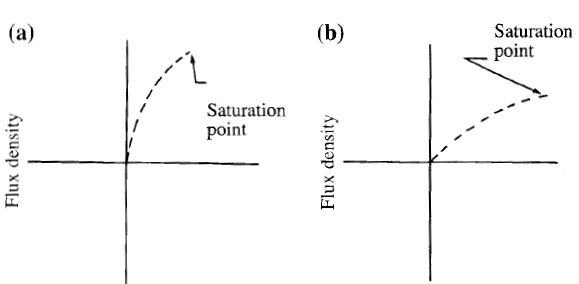Magnetic Permeability
One of the most important properties of magnetic materials is permeability. Permeability can be described as the ease with which materials can be magnetized. More specifically, permeability is the ratio between the flux density and the magnetic field strength (B divided by H). Figure a is the virgin curve of a high permeability material, and Figure b is the virgin curve of a low permeability material.
Magnetic permeability curves: (a) high permeability virgin curve; and (b) low permeability virgin curve.
The reciprocal of permeability is reluctance, defined as the resistance of a material to changes in magnetic field strength. Magnetic properties and hysteresis loops vary widely between materials and material conditions. They are affected by chemical composition, microstructure and grain size. Figure a is a
hysteresis loop for hardened steel, and the loop is typical of a material with low permeability, high reluctance, high retentivity and high residual magnetism that requires high coercive force for removal. Figure b is the hysteresis loop for annealed low carbon
Positive field strength hysteresis loops: (a) hardened steel hysteresis loops; and (b) annealed low carbon steel hysteresis loop.
steel. It is typical of a material with high permeability, low reluctance, low retentivity and low residual magnetism that requires a low coercive force for removal. A high carbon alloy would be harder to magnetize and demagnetize, thus would have low reluctance and high retentivity.

